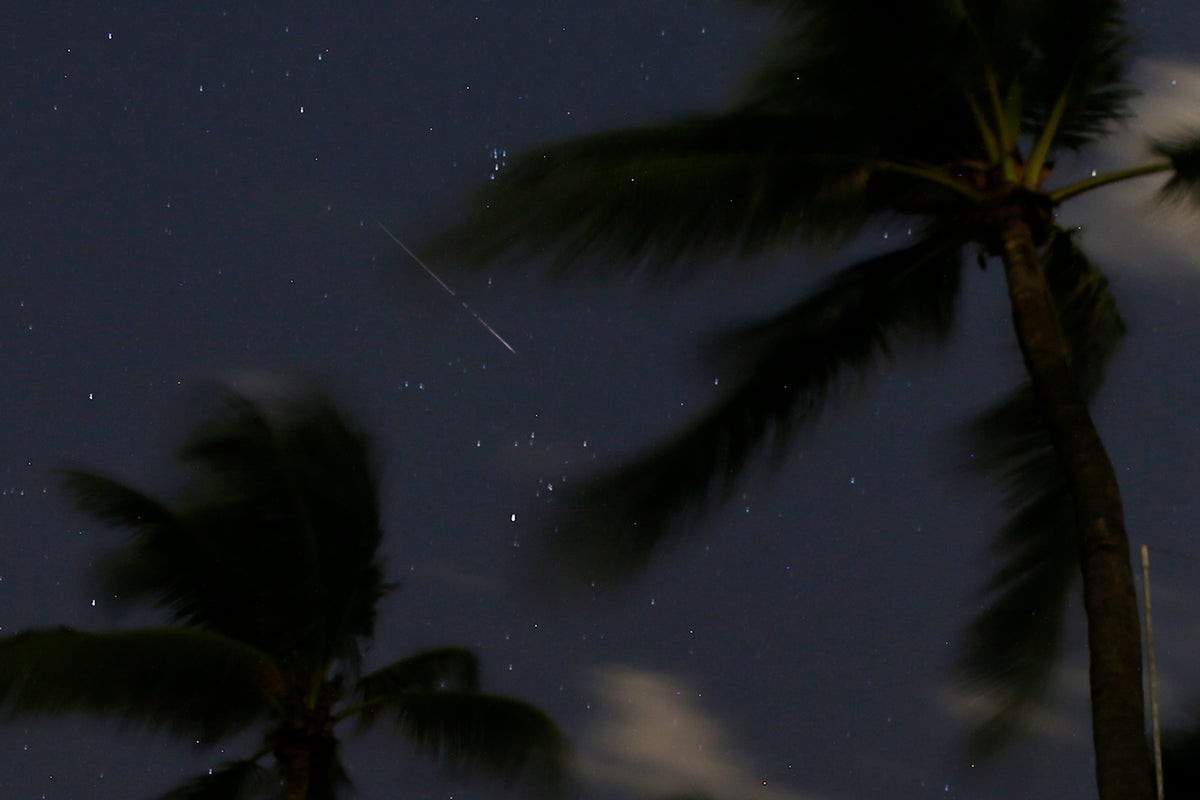
Summer's most dazzling meteor shower, the Perseids, peaks soon.
This year, a bright moon will dampen viewing at the time of peak early Wednesday morning, so some experts recommend waiting a week or so to glimpse shooting stars against a darker sky.
The Perseids "are an incredible meteor shower,” said Thaddeus LaCoursiere, planetarium program coordinator at the Bell Museum in St. Paul, Minnesota.
Under dark skies with no moon, the Perseids can produce between 60 to 100 meteors per hour, he said. Since the moon will be around 84% full during the peak, skywatchers might expect between 10 to 20 meteors per hour, according to the American Meteor Society.
“This year I’m actually recommending that people go out a little bit later" — a week or so past the peak when the moon will not be as bright, LaCoursiere said.
Viewing of the Perseids lasts until August 23.
What is a meteor shower?
As the Earth orbits the sun, several times a year it passes through debris left by passing comets and sometimes asteroids.
The source of the Perseids is debris from comet 109P/Swift-Tuttle.
When these fast-moving space rocks enter Earth’s atmosphere, the debris encounters new resistance from the air and becomes very hot, eventually burning up.
Sometimes the surrounding air glows briefly, leaving behind a fiery tail — the end of a “shooting star.”
You don’t need special equipment to see the various meteor showers that flash across annually, just a spot away from city lights.
How to view a meteor shower
The best time to watch a meteor shower is in the early predawn hours when the moon is low in the sky.
Competing sources of light — such as a bright moon or artificial glow — are the main obstacles to a clear view of meteors. Cloudless nights when the moon wanes smallest are optimal viewing opportunities.
And keep looking up, not down. Your eyes will be better adapted to spot shooting stars if you aren’t checking your phone.
When is the next meteor shower?
The next major meteor shower, the Orionids, peaks in late October.
___
The Associated Press Health and Science Department receives support from the Howard Hughes Medical Institute’s Science and Educational Media Group. The AP is solely responsible for all content.
Meteorologist defends his decision to text his wife during a live storm report
Hubble Space Telescope takes best picture yet of the comet visiting from another solar system
July was Earth's third-warmest on record, EU scientists say
Takeaways from AP’s report on Alaska Natives’ response to oil and mining proposals
UK housebuilders in focus as construction woes cloud outlook
Passenger injured in waterslide accident on board Royal Caribbean cruise







